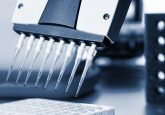Utilizing diamond defects to detect single nucleus spins

Researchers at Harvard University (MA, USA) have developed an extremely sensitive magnetic resonance technique, capable of measuring the spin of a single electron. The researchers took advantage of quantum electron spin states that naturally exist on the surface of diamond. Their findings were published in Physical Review Letters in November.
Nitrogen vacancy (NV) centers occur when a carbon atom within the diamond lattice is substituted by nitrogen, subsequently leaving a hole or vacancy within the lattice. NVs have an electronic quantum spin state and emit luminescence that couples to the spin states, which can be regulated by a magnetic field. This means that changes in luminescence intensity can be utilized to monitor changes in local magnetic field.
The NV centers have the potential to act as very sensitive magnetometers; however, until now, it has not been possible to detect the tiny magnetic fluxes caused by a single nucleus due to them being too far (around 4 nm) below the diamond surface.
To overcome this problem of the buried NV centers, Hongkun Park, Mickhail Lukin and their team at Harvard University are utilizing the quantum electron spin states that exist naturally on the surface of diamond. “Diamond has surface electron spins that are also sensitive to local magnetic fields,” explained Alex Sushkov of Harvard University, lead author of the research. “Because these are on the surface, unlike NV, they are able to detect single nuclear spins on the surface of the diamond.”
Disturbing the surface spins impacts the magnetic field of the nearby NVs – therefore the surface spins act as ‘quantum reporters’ for changes in the magnetic field on the surface. Surface spins, referred to as ‘dark spins’ as they do not luminesce, can be used to detect individual protons on the surface of a diamond. This information translates to the NVs, which then provides a luminescence read out.
Sushkov commented on the potential created by the findings: “We think it could be possible to use this method to probe the structure of a single molecule sitting on the surface of the diamond, mapping the positions of atoms within the molecule that possess a nuclear spin.”
This in turn could reveal detailed structural information on complex molecules, such as some proteins, which has not been possible with existing X-ray diffraction or liquid-state NMR methods, he added.
Sources: Sushkov AO, Lovchinsky I, Chisholm N et al. Magnetic resonance detection of individual proton spins using quantum reporters. Phys. Rev. Lett. 113, 197601, DOI: 10.1103/PhysRevLett.113.197601 (2014); Magnetic resonance taken to the limit.






